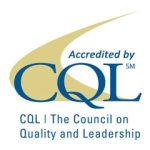Understanding Autism
Autism spectrum disorder (ASD) is a diverse group of complex conditions caused by differences in the brain. Autism is a spectrum disorder, meaning that it can manifest very differently in each person.
According to the CDC and WHO, scientists believe there are multiple causes of ASD that act together to change the most common ways people develop. We still have much to learn about these causes and how they impact people with ASD.

People with ASD may behave, communicate, interact, and learn in ways that are different from other people – or in ways that are different than what is traditionally accepted or perceived as “normal” (it is worth noting that we have normal in quotes here!). We like to say “if you’ve met someone with ASD, you’ve met ONE person with ASD” because every person on the spectrum is unique. For example, some people with ASD may have advanced conversation skills whereas others may be nonverbal. Some people with ASD need a lot of help in their daily lives; others can work and live with little to no support.
A broad range of interventions, from early childhood and across the life span, can optimize the development, health, well-being and quality of life of autistic people – this is where MAC comes in.
You can come to MAC with a formal diagnosis or you can come to MAC for a diagnosis - we will meet you wherever you are on this journey.
OLDER CHILDREN AND TEENS
While many children with autism are diagnosed in early childhood, every child is different and some differences that signal autism may not appear until they are older. For some children, the complex challenges of socializing and navigating a school environment as they get older can bring forward a diagnosis that wasn’t apparent before. In older children, signs of autism may include having very strong or unusual interests or having difficulty making and maintaining friendships with peers. Teenagers with autism might also have levels of school-related anxiety that are higher than normal.
ADULTS
Some people make it to adulthood without a formal diagnosis. Higher functioning adults on the autism spectrum become very resourceful in developing strategies to “mask” characteristics and behaviors that would have otherwise made an autism diagnosis more likely. Sometimes lack of resources or access to professionals created an obstacle to a diagnosis.
FAMILIES
MAC also offers family therapy. We understand that everyone in the family is impacted by an autism diagnosis.


